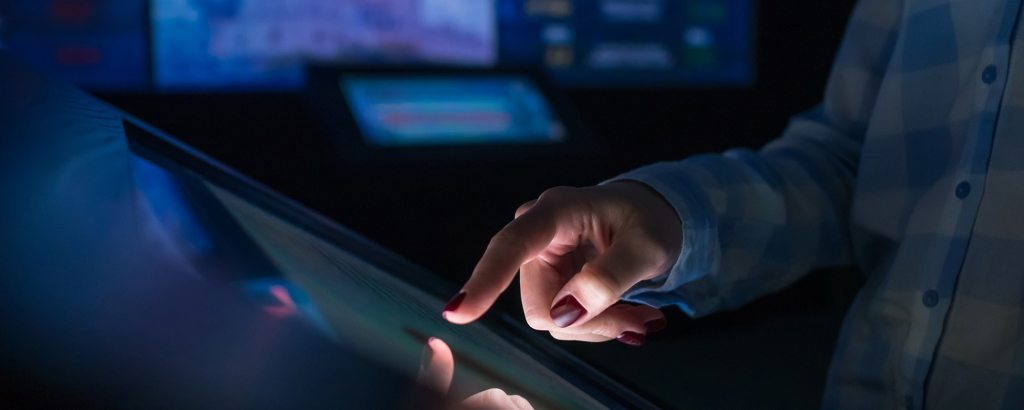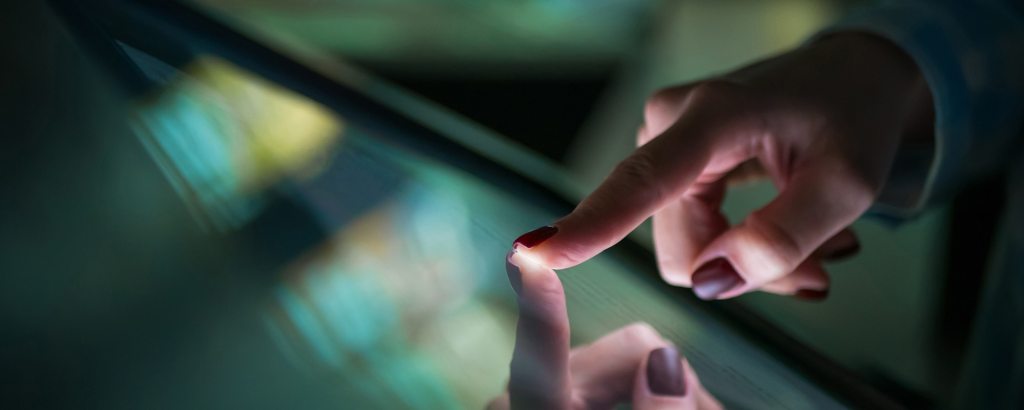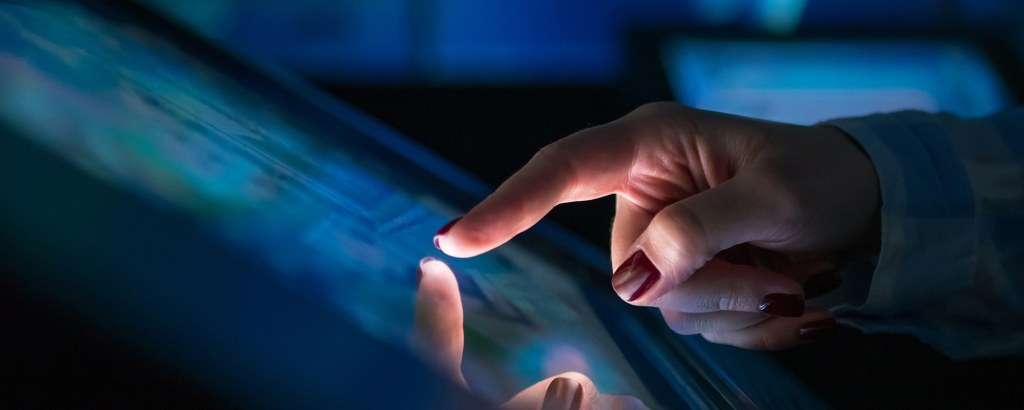
Unlocking Interaction: What Exactly is a Touchscreen?
In a world awash with technology, where the virtual and the tangible seamlessly merge, one innovation has become synonymous with modern interaction: the touchscreen. We encounter it daily, from the moment we wake up and groggily silence our alarms to the late-night scrolling sessions that gently ease us into slumber. It’s an interface that has revolutionized the way we communicate, navigate, and create. But have you ever paused to ponder the mechanics behind this seemingly magical window into the digital realm? What, truly, is a touchscreen?
At its essence, a touchscreen is a bridge that spans the gap between the tactile reality of our fingertips and the intangible world of data and information. It’s a liaison that allows us to reach out and manipulate a digital landscape, effortlessly translating our gestures into commands, our touches into actions. To understand the marvel of this technology, we must embark on a journey through its evolution, tracing its roots back to the early inklings of interaction and witnessing the metamorphosis that has brought us to the touchscreens of today.
The concept of touch-driven interaction isn’t new. In fact, it has woven itself into the fabric of human history, from the early cave paintings that demanded physical contact to be understood, to the scratchy surface of ancient wax tablets that held the secrets of civilizations long past. But it wasn’t until the latter part of the 20th century that this age-old principle was harnessed, moulded, and infused with the power of the digital age.
Join us as we dive into the captivating history of touchscreen technology, exploring the pioneering moments, the breakthroughs, and the ingenuity that collectively birthed a revolution. We’ll unravel the diverse types of touchscreens that have graced our lives – from resistive to capacitive, from single-touch to the multi-fingered symphonies that dance across our screens today. Together, we’ll traverse the milestones that have shaped our touch-centric world and peer into the exciting future that promises even more immersive and intuitive ways to interact.

Touchscreen Technology: History and Significant Changes and Advancements
Milestones and Innovations Over the Years
- 1960s: The concept of touchscreens emerged, with early experiments and research conducted on touch-sensitive technology.
- 1970s: The first true touchscreen was developed by Dr. Sam Hurst at the University of Kentucky, known as the “Elograph.” It used a transparent surface overlay to detect touches.
- 1982: The first resistive touchscreen was developed by Elographics, incorporating layers of conductive material to detect touch by pressure.
- Late 1980s: The development of the first capacitive touchscreen technology began, paving the way for modern multi-touch gestures.
- 1993: IBM’s Simon Personal Communicator, often considered the first smartphone, integrated a resistive touchscreen for user interaction.
- 2000s: Advancements in touch technology led to the rise of resistive touchscreens in various devices, including PDAs and early smartphones.
- 2007: Apple’s iPhone introduced multi-touch capacitive touchscreens to the mainstream, revolutionizing the smartphone industry.
- 2010s: Capacitive touchscreens became the standard in smartphones and tablets, allowing for more intuitive gestures and interactions.
- 2012: Flexible and foldable touchscreens started to emerge, showcasing new possibilities for form factors.
Notable Changes in Touchscreen Technology
- Higher Resolution and Clarity: Touchscreen displays have seen improvements in resolution, clarity, and colour accuracy. The introduction of higher pixel densities, OLED and AMOLED technology, and advancements in LCD panels have contributed to sharper and more vibrant screens.
- Multi-Touch Gestures: Multi-touch technology has become more sophisticated, allowing for the recognition of multiple simultaneous touch points and gestures. This has led to improved user interactions, such as pinch-to-zoom, rotation, and more complex gestures.
- Capacitive vs. Resistive Screens: While capacitive touchscreens (used in most smartphones and tablets) have dominated the market due to their responsiveness and durability, resistive touchscreens have also seen some advancements, becoming more accurate and sensitive.
- In-Display Touch and Fingerprint Sensors: The integration of touch sensors and fingerprint sensors directly into the display has become more widespread. This has allowed for larger screen-to-body ratios and improved biometric security.
- Foldable and Flexible Displays: Foldable and flexible touchscreen displays have emerged, enabling new form factors for devices like foldable smartphones and tablets. These displays use innovative technologies to maintain touch sensitivity even when bent or folded.
- Haptic Feedback: Haptic feedback systems have evolved to provide more realistic and nuanced tactile sensations, enhancing the user experience when interacting with touchscreens.
- Gesture Recognition: Advanced gesture recognition technology has been developed, allowing users to interact with devices through hand movements and gestures without physically touching the screen.
- Touchscreen Material Advancements: Manufacturers have experimented with different materials for touchscreen displays, including strengthened glass and scratch-resistant coatings to improve durability and longevity.
- Improved Stylus Support: Stylus technology has seen improvements, with finer tips, increased pressure sensitivity, and reduced latency, making stylus interactions more accurate and natural.
- Health and Safety Enhancements: Some touchscreen devices have incorporated features to reduce fingerprint smudging, as well as antimicrobial coatings to improve hygiene.

Touchscreen Technology: PCAP and Resistive Explained
In the realm of touchscreen technology, two prominent contenders have emerged, each offering a unique approach to bridging the gap between human touch and digital interaction: Projected Capacitive (PCAP) and Resistive touchscreens. These two methods have revolutionized the way we interact with devices, from smartphones and tablets to point-of-sale systems and industrial displays. Join us as we delve into the mechanics, advantages, and applications of these touchscreen titans.
Projected Capacitive (PCAP): Where Sensitivity Meets Sophistication
Projected Capacitive touchscreens, commonly known as PCAP, are the darlings of modern touch technology. Their exceptional sensitivity, precision, and sleek design have made them a staple in smartphones, tablets, and high-end displays. So, what sets PCAP apart?
Understanding the Tech:
At its heart, PCAP relies on the principles of capacitance. A matrix of transparent electrodes is positioned along the screen’s surface, creating an electric field. When you touch the screen, your fingertip disrupts this field, causing a change in capacitance that is precisely detected. This touch data is then translated into the familiar gestures we use daily.
Advantages in Abundance:
- Multi-Touch Marvel: PCAP’s ability to detect multiple touch points simultaneously enables intuitive gestures like pinch-to-zoom, rotation, and swipe.
- Crystal-Clear Clarity: The absence of additional layers allows for excellent transparency and image clarity.
- Durability and Longevity: With no physical layers to wear out, PCAP touchscreens boast impressive durability and a longer lifespan.
- Design Elegance: PCAP’s slim, sleek profile lends itself to modern, aesthetically pleasing designs.
Where PCAP Shines:
From smartphones that effortlessly respond to every flick and tap to interactive kiosks that guide us through shopping centers, PCAP’s precision and versatility have found a home in various applications across consumer electronics, retail, healthcare, and beyond.
Resistive Touchscreens: A Touch of Simplicity and Universality
While PCAP dazzles with its finesse, Resistive touchscreens offer a more robust and universally accessible approach to touch interaction.
How it Works:
A Resistive touchscreen consists of multiple layers, typically two flexible sheets coated with a conductive and resistive layer respectively. When pressure is applied, the layers make contact, completing a circuit. The touch coordinates are determined by measuring the electrical resistance at the point of contact.
Benefits in Brief:
- Affordability: Resistive touchscreens are often more cost-effective to produce, making them accessible for a wider range of applications.
- Glove and Stylus Friendly: The pressure-based nature of resistive touch means it can be activated by any object, including gloves or styluses.
- Rugged Reliability: These touchscreens are highly durable and can withstand physical wear and tear.
Applications Aplenty:
Resistive touchscreens find their niche in scenarios where durability and universal compatibility take precedence. They’re commonly employed in industrial machinery, point-of-sale systems, and environments where precise touch gestures may not be the primary concern.

Enhancing Displays: Unveiling the Techniques of Strip Bonding and Optical Bonding
In the dynamic world of display technology, two distinct methodologies have emerged to elevate visual experiences to new heights: Strip Bonding and Optical Bonding. These techniques, though differing in approach, share a common goal – to enhance display performance by optimizing clarity, visibility, and durability. Join us as we delve into the mechanics, benefits, and applications of these bonding innovations.
Strip Bonding: Precision in Integration
Strip Bonding, also known as “tape bonding” or “film bonding,” is a technique that involves attaching a thin, optically clear adhesive film (often referred to as OCA, or Optical Clear Adhesive) between layers of a display assembly. This technique is especially prevalent in the manufacturing of liquid crystal displays (LCDs) and organic light-emitting diode (OLED) panels.
The Art of Layering:
Strip Bonding is a meticulous process that involves layering components with precision. The adhesive film is applied to the back of the cover glass or touch sensor. Once the film is in place, the display layers are compressed together using pressure, ensuring a bubble-free, optically clear bond.
Benefits that Shine:
- Enhanced Visibility: Strip Bonding minimizes the air gap between display layers, reducing internal reflections and glare, thus improving outdoor visibility and image quality.
- Durability: The adhesive layer acts as a protective shield, safeguarding the display against moisture, dust, and other environmental factors.
- Touch Sensitivity: The thin adhesive layer maintains touch sensitivity, ensuring a seamless user experience.
Applications in Action:
Strip Bonding finds its niche in devices where outdoor visibility, ruggedness, and image quality are paramount. It is commonly employed in industrial displays, medical equipment, and outdoor digital signage.
Optical Bonding: The Art of Merging
Optical Bonding is a technique that takes display enhancement a step further by directly fusing the cover glass or touch panel with the display module itself. This process involves injecting a liquid adhesive, typically an optically clear resin, between the layers, which is then cured to form a solid bond.
Unveiling the Fusion:
Optical Bonding involves careful alignment and precise application of the adhesive to eliminate air gaps and enhance optical clarity. Once cured, the adhesive not only eliminates internal reflections but also minimizes the effects of ambient light, resulting in a display that appears as if the images are “painted” directly onto the glass.
Advantages that Dazzle:
- Extreme Durability: The direct fusion of layers provides exceptional protection against moisture, dust, and physical impacts.
- Sunlight Readability: Optical Bonding significantly reduces glare and increases the display’s visibility under bright sunlight.
- Touch Performance: The elimination of air gaps ensures uniform touch sensitivity across the entire display.
Applications in Focus:
Optical Bonding finds its stride in applications where visual performance is critical. It’s a favored choice for high-end smartphones, rugged tablets, aviation displays, and marine navigation systems, where uncompromising clarity and durability are prerequisites.
The Common Pursuit: Elevating Visual Excellence
In the world of display technology, both Strip Bonding and Optical Bonding share a common aspiration – to refine the visual experience by reducing reflections, enhancing clarity, and fortifying durability. Whether it’s the precision of Strip Bonding or the fusion of Optical Bonding, these techniques are the artisans’ tools that craft displays that not only meet but exceed the demands of modern users. As we peer into the future of display innovation, one thing is clear: the pursuit of excellence will continue to be illuminated by the bond between technology and human perception.

Unleash the Power of Touch with BVM: Your Partner in Touch Technology Integration
As we conclude our exploration of Strip Bonding and Optical Bonding – two remarkable techniques that have redefined the world of display technology – we invite you to take the next step in your journey toward enhanced visual experiences. At BVM, we’ve spent over three decades dedicated to the art of integrating touch technology into industrial and embedded devices, shaping the way industries interact, innovate, and excel.
Experience Matters: Why Choose BVM?
With a legacy spanning more than 30 years, BVM stands as a trailblazer in the realm of touch technology integration. Our expertise extends beyond the theoretical and delves deep into the practical – we understand the unique challenges and demands of various industries, from medical and transportation to manufacturing and beyond. Our team of seasoned professionals possesses the knowledge and insight necessary to transform your vision into a tangible reality.
The BVM Difference:
- Tailored Solutions: We believe in the power of customization. Every project is a canvas, waiting for the stroke of our touch technology mastery to create a masterpiece uniquely suited to your needs.
- Cutting-Edge Expertise: Our finger rests firmly on the pulse of technology advancements. We embrace innovation, ensuring that the solutions we provide are at the forefront of the ever-evolving touch landscape.
- Unparalleled Support: Beyond the integration process, our commitment to your success extends to comprehensive support, ensuring your touch-enabled devices operate seamlessly and effectively.
Unleash the Potential: Your Next Steps
As you contemplate the possibilities that Strip Bonding and Optical Bonding unlock, we invite you to embark on a partnership that will elevate your vision to new heights. Whether you’re seeking to enhance outdoor visibility, fortify durability, or simply explore the boundless potential of touch technology, BVM is your steadfast ally.
Connect with us today to take that crucial step forward:
Phone: 01489780144 Email: sales@bvmltd.co.uk

We offer a range of TFT/LCD customizations, including:
- Customised TFT/LCD module design
- Touchscreen and cover glass customisation
- Custom firmware
- Custom controller design

In addition to our TFT/LCD customisations, we also offer a range of support products, these include:
- Custom cable design
- Custom power supply design
- Custom chassis design

For those looking for more comprehensive customisation options, we also offer finished monitor customisation services. This can include:
- Standard off the shelf product customisation:
- Custom bezel colours
- Custom logo
- Custom open frame chassis design
- Complete custom monitor design
Display Enhancement Services
To complement this range, we also offer display enhancement services to provide you with exactly what you need. Here’s a selection of our services :-
- LVDS and backlight cable manufacture
- Application of anti-glare/anti reflective coatings
- Touch screen integration – pCAP, resistive….etc
- Optical bonding for sunlight readability and display robustness
- LED backlight enhancement services
- FPC tail positioning
Let’s embark on a journey of innovation together, where your ideas and our expertise merge to shape a future where touch technology transcends boundaries, ignites creativity, and transforms industries. The power of touch is at your fingertips – seize it with BVM.
We like to make life easier ….
BVM supply a wide and diverse range of Industrial and Embedded Systems.
From Industrial Motherboards, SBCs and Box PCs, to Rack Mount computers and Industrial Panel PCs.
Our technical & commercial team members will always provide you with valuable but impartial advice around the products and services that BVM provide. With their collective backgrounds, they’ll provide you with the benefit of their knowledge and experiences when & where you need it. We’ll always help you in the first instance and get back to you when additional information is required.
You can either call us directly on +(0) 1489 780 144 and talk to one of the team | E-mail us at sales@bvmltd.co.uk | Use the contact form on our website



